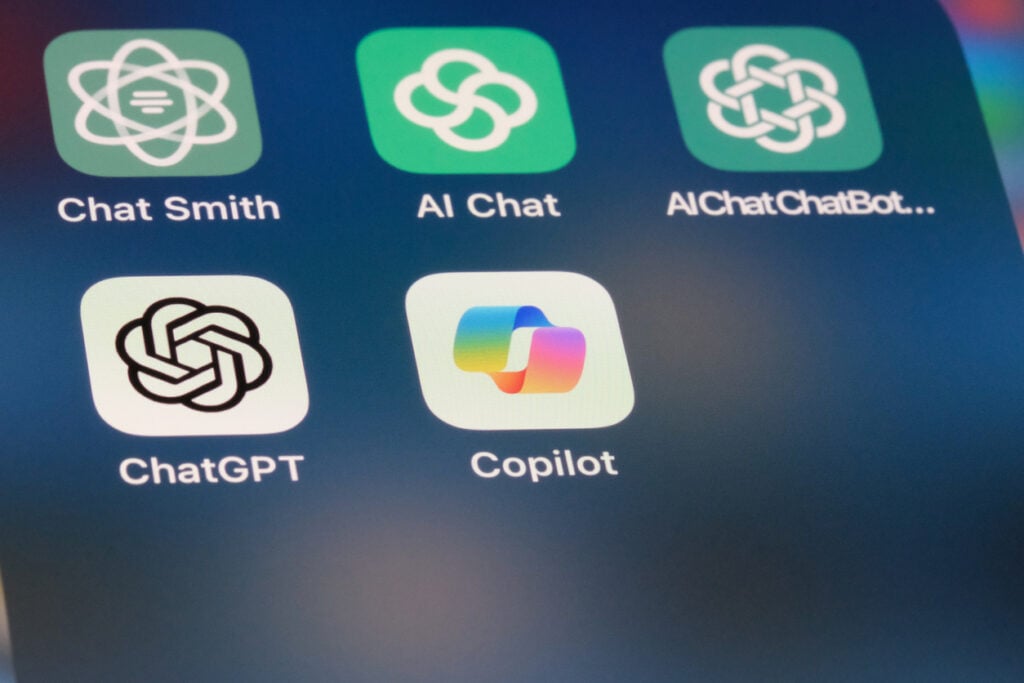Artificial intelligence (AI) is transforming the way businesses operate, innovate and compete. But how can you leverage the power of AI in your own organisation? What are the stages of AI maturity and what are the best practices and pitfalls to avoid at each level?
In this blog post, I will outline the five stages of AI adoption and provide some examples and tips to help you navigate your AI journey.
1. PLAYING WITH GENERATIVE AI

Most people start getting “AI Fit” by experimenting with systems like ChatGPT or Microsoft’s Copilot and use them to complete discrete tasks. Some great examples are writing job descriptions, brainstorming interview questions, conducting research, writing documents and creating presentations.
Personally, I have found the effectiveness of AI tools really depends on HOW I use them. The key skill to learn at the awareness stage is to master the art of prompt engineering. This means crafting the right input for the AI system to generate the desired output. Give it as much information as you can about what you want it to create and how you want it to sound. To give you an idea, the prompt I started with to create this blog was over 1,700 characters long.
The biggest pitfall during the Awareness stage is sometimes, generative AI will generate legitimate-sounding false content. This just means it’s still your responsibility to be discerning of the content generative AI produces. You must be accountable for the quality of the output. Always review, edit and verify all AI-generated content before using it for any purpose.
2. SYSTEMISE GENERATIVE AI

Once you’ve gotten the hang of prompt engineering, it’s time to move beyond experimenting and start incorporating generative AI into your business processes.
Examples include routinely generating proposals from meeting notes or presentations from documents. This can save you time, improve consistency and enhance creativity. The same pitfalls as stage 1 apply here. You should always check the accuracy, relevance and originality of AI-generated content. I had a great example of this the other day when I recorded a call where I was showing someone how to do something in one of our systems. I asked AI to generate a work instruction based on the recording. It produced a step-by-step process, which would have been great if it were not completely wrong. It even told you to click buttons that don’t exist! As often happens by refining how I was asking it to perform the task I was able to get a decent result.
You should also establish clear guidelines and standards for using generative AI in your organisation. For example, you may want to define the scope, frequency, and approval process for using generative AI for certain tasks or projects. At Insentra we have an AI Policy which clearly states the author is accountable for the quality of anything produced using AI.
3. LEVERAGE SPECIALISED AI TOOLS
The value of AI is not just about productivity. You can also use it to improve quality or reduce risk.
Examples of using specialised AI tools to add value include using an AI voice model to generate audio from text, using an AI image model to enhance or edit photos, using an AI sentiment analysis model to gauge customer feedback, or using an AI fraud detection model to prevent scams. These tools can help you create better products, services or experiences for your customers, employees or partners.
The pitfall to watch out for here is relying too much on the AI tool without understanding its limitations, assumptions and biases. You should always test, evaluate and monitor the performance and impact of the AI tool on your business outcomes and stakeholders.
4. API LEVEL INTEGRATION
The next level starts to automate the integration of AI tools into your workflow. This means using application programming interfaces (APIs) to connect the AI tools with your existing software, platforms or systems. This can enable you to scale up your AI usage, streamline your processes and optimise your resources.
The big risk here is the potential to automate the production of bad output. As such, the process may still require a human validation step, depending on the output. You should also ensure that the AI tools are compatible, secure and compliant with your data and infrastructure. Additionally, establish a clear strategy and governance for managing your AI APIs and their dependencies.
5. BUILD YOUR OWN
Develop your own AI models using your intellectual property (IP). This means using your own data, domain specific knowledge and business logic to train and deploy custom AI models to solve your specific problems or create unique value propositions.
Developing your own AI models can give you a competitive edge, a deeper insight or a higher impact. The pitfall to watch out for here is letting your model inherit your internal biases and blind spots. You should always follow the best practices and ethical principles for developing and deploying responsible AI. Also, have a robust data and model management system to ensure the quality, security and accountability of your AI models.
The Journey to AI Maturity
We hope this blog post has given you a useful overview of the maturity journey for AI adoption in businesses.
If, like most organisations, you are only at the start of this journey, then our Generative AI Sprint Series is a great place to start learning how to leverage AI to drive real business impact. Join our Gen AI Sprint 1, a complimentary training course where you can learn foundational AI skills and use cases to learn where and how your organisation can benefit the most from generative AI.
Contact us today to get started on your AI adoption journey, or download our eBook “How to Not Be Replaced by AI: The Definitive Guide to Gen AI in the Workplace .”










